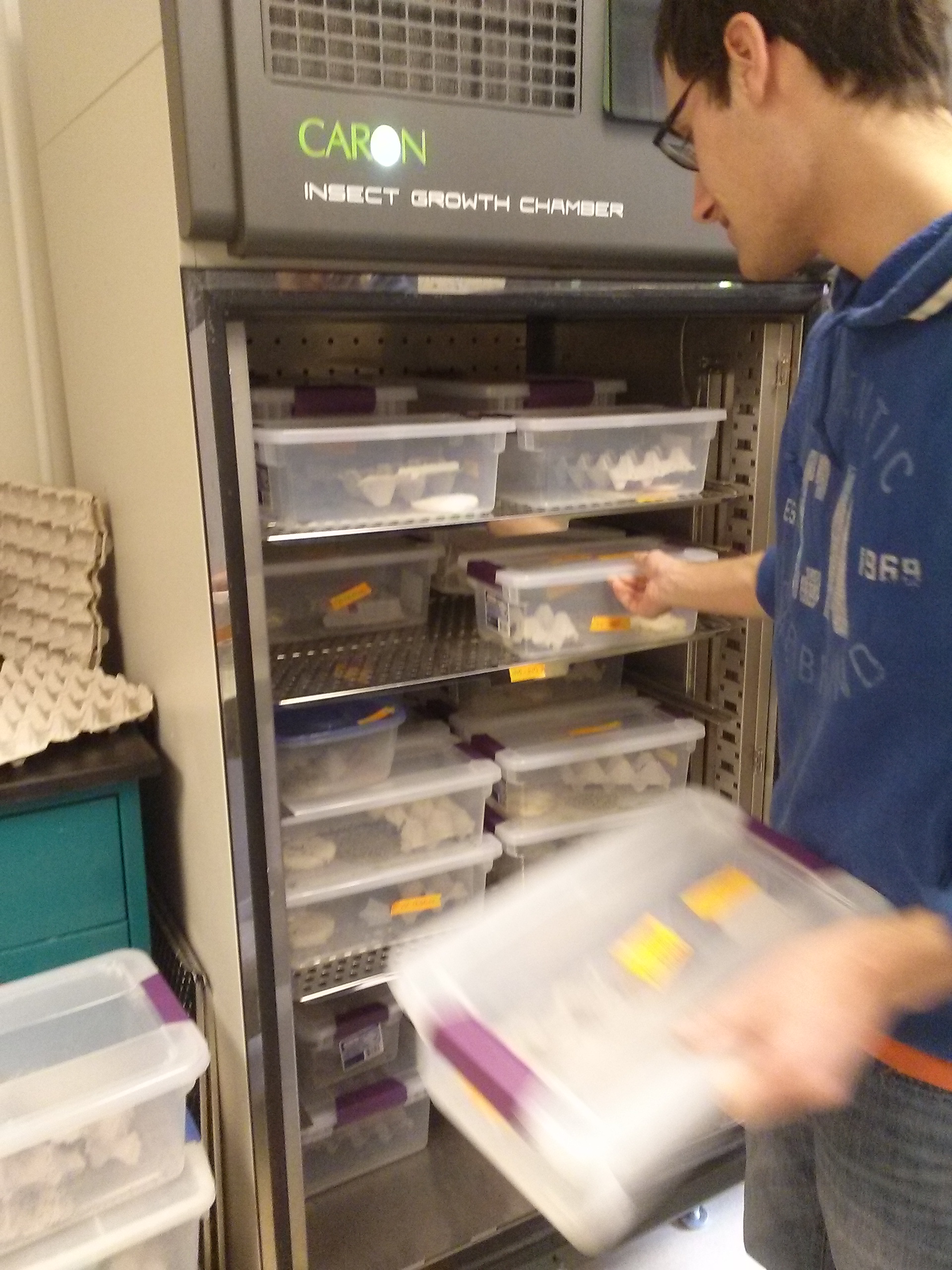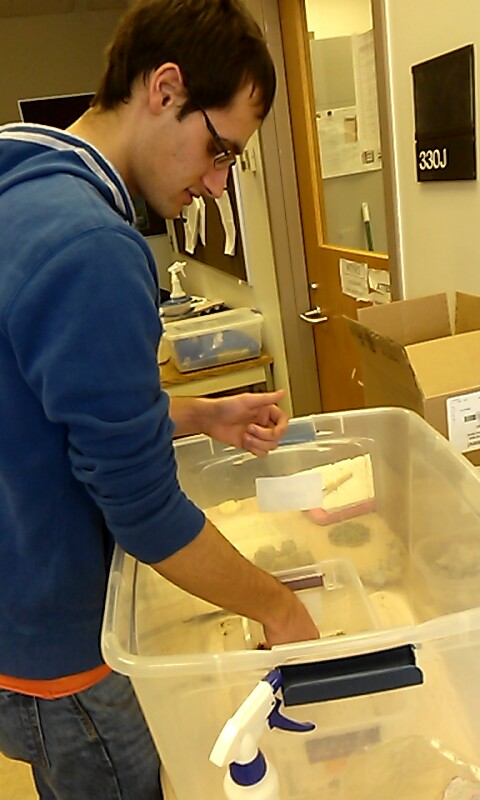Telogryllus Oceanicus Background
This wikipedia page was written by lab member Ryan Duffy.
The Science of Cricket Song and Signaling
Minnesota Conservation Volunteer magazine published an overview of singing insects in their July-August 2004 issue, including answers to how and why singing insects make their calls. This piece includes excellent images and descriptions of cricket and cicada sound systems.
Singing Insects of North America, by Thomas Walker of the University of Florida and Thomas Moore of the University of Michigan, is an excellent resource for identifying crickets, katydids, and cicadas. The website also features several sample insect songs.
Insect Singers focuses in particular on cicadas but does contain links to information on acoustically signaling insects in general.
Music of Nature is another website with lovely recordings of numerous wild soundscapes, and features several singing insects including three species of crickets.Would you like to hear more recordings of singing insects? John Himmelman, author of Cricket Radio: Tuning in to the Night-Singing, has both narrated and un-narrated recordings of 61 crickets and katydids at his website.
You can watch a video of a cricket in our lab singing here.
Additional Links
Commonly Used Lab Protocols
Cricket Care Manual
This is a detailed presentation explaining our daily lab procedures when working with the crickets including storage, handling, and clean-up.
Cricket Math
Lab member Alex Best details the time needed to raise any desired number of crickets.
Eclosion Protocol
This procedure dictates the steps taken to prepare crickets for behavior trials when they have completed the final molt.
University of Minnesota Employee Timesheet

Jon carefully stacks the incubator shelves with boxes of Wailua crickets.

Alex removes the food and water when cleaning cricket boxes.

Jon uses secondary containment to keep in jumping crickets.